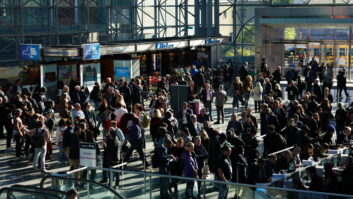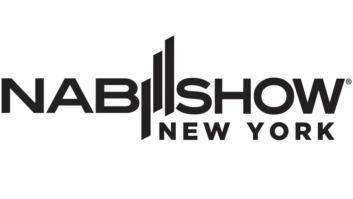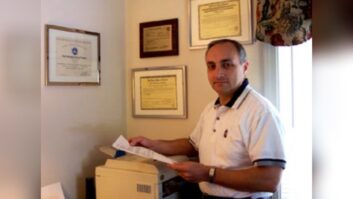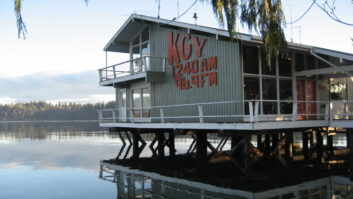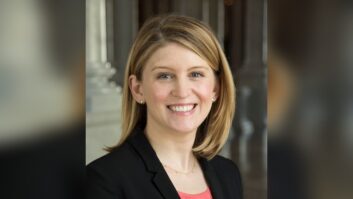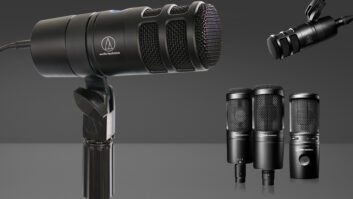
Jeff Smith
The flagging economy has done little to slow the pace of broadcast technology. Staying current with developments is as challenging as ever.
Radio World spoke with the chairmen of the upcoming NAB Show Broadcast Engineering Conference about themes and trends that underlie this year’s presentations. BEC sessions are explored in detail in the subsequent pages of this issue.
Jeff Smith, supervisor of broadcast/studio engineering for Clear Channel New York, is chairing two groups of sessions, one about IP and the other about radio facilities.
He notes that AoIP is well established among broadcast plants. “It offers a cost-effective, sensible and efficient way to move audio around the facility. What’s different this year is that the IP audio industry has matured to the point that manufacturers are talking seriously about standards, and that will be the focus of many of the papers.”
He adds that the IEEE 802.1 AVB standard addresses broadcast needs such as multichannel capability, synchronous operation, transmission over the Internet and the ability to send control and data information along with audio.
“What may surprise radio engineers,” he said, “is that 802.1 AVB has been embraced by such non-broadcasters as BMW, JBL and Sony, as they see the potential for seamless integration of radio content into auto and consumer audio environments.”
Smith notes that the standard is in use by other sectors. “You will be able to see products on the floor at NAB that already utilize it. We are now beginning to see true standards in IP audio rather than company standards.”
Smith’s other session grouping is about radio facilities, and it reflects today’s operating realities and limited budgets. The three presentations will highlight facilities control and monitoring at both the studio and transmitter. “The trend in the industry is to do more with fewer engineers, and these sessions address that need in different ways.
“One trend that we’re seeing in facilities control is a greater adoption of IT standards in the broadcast world. This makes sense, as the larger IT players like Cisco and HP have invested considerable resources in research and development. Broadcast manufacturers might as well take advantage of it.
“Presentations by WorldCast and Nautel will probably appeal to clusters and those who have larger infrastructures to maintain, while Radio Free Asia’s presentation will be of interest to stations with a limited budget.”
Rollout renewal?

Mike Cooney, right, visits a job site with Richard Gallow, Beasley chief engineer for Ft. Myers, Fla. Two groupings about sessions on digital radio will be hosted by Mike Cooney, vice president of engineering and chief technology officer of Beasley Broadcast Group.
He said that prior to the recent FCC ruling allowing a power increase for HD Radio, most broadcasters had stopped upgrading facilities. Many manufacturers also had ceased developing new high-power HD solutions.
“With the commission’s recent approval, expect transmitter manufacturers to present new and innovative solutions to solve many of the challenges associated with the power increase.”
Cooney believes these changes will have a major impact on the HD Radio landscape.
“Many of the solutions used in the initial launch of HD, such as high-level combining, are no longer viable at the new power levels. In many cases, we will spend more on the second HD launch than we did on the first.” However, he is encouraged to see more clarity about the future of HD power levels, and said manufacturers are developing and presenting solutions that will help overall efficiencies while minimizing the size and cost of IBOC transmitters.
While most engineers may understand the issues related to digital power upgrades, Cooney fears others in the management and financial ends of the business may not.
“Other people involved in the process may vastly underestimate how difficult and expensive higher-power HD will be to implement.”
When he is not moderating, Cooney plans to be shopping for new gear.
“We have several unlicensed microwave systems in need of replacement, so I will be looking at licensed and unlicensed alternatives as well as IP-based systems.”
Easy bein’ green
BEC sessions about radio data services and green technologies will be chaired by Dom Bordonaro, chief engineer of Cox Radio Connecticut.

Dom Bordonaro Green technology is a topic of increasing importance to broadcasters. Two notable themes are Leadership in Energy and Environmental Design certification and the Waste Electrical and Electronic Equipment Directive.
“LEED certification is the industry standard for measuring building sustainability,” said Bordonaro. “Achieving LEED certification is the best way to demonstrate that a station’s physical plant is truly green.”
This rating system was developed and is administered by the U.S. Green Building Council. It is designed to promote construction practices that increase profitability while reducing the negative environmental impacts of buildings.
The WEEE Directive seeks to minimize the impact of electrical and electronic goods on the environment by increasing reuse and recycling of equipment, reducing the amount going into landfills. It seeks to achieve this by making manufacturers responsible for financing the collection, treatment and recovery of surplus equipment and by obliging distributors to allow consumers to return unwanted equipment free of charge.
“WEEE has already been legislated in Europe by the EU, and we can expect to see something similar here in the United States,” Bordonaro believes.
Presentations on radio data systems will include information on both analog RDS and HD data services. He notes that, in addition to FM receivers, many portable devices have RDS capability, most notably mobile phones. Though RDS is not widely deployed on mobile devices in the United States, it is popular overseas for emergency alert purposes.
HD Radio’s datacasting technology has more bandwidth than RDS and is field-based (title, artist, album) rather than text-based. It can also send tagged graphics that are not visible on HD Radios but can be used for advertising with LCD billboards and signs on taxicabs. These capabilities are beginning to be exploited on a larger scale in the marketplace.
“Broadcasters are looking beyond posting artist and song title information towards options that may enhance the revenue stream. Possibilities include alerting for security purposes, public warnings, services for the hearing impaired, and tagging songs for download into consumer electronics devices.”

Andy Laird Semper paratus
Andy Laird, vice president and chief technology officer of Journal Broadcast Group, will moderate two groups of presentations, one on disaster preparedness, recovery and security, the other radio case studies. The topic of being prepared has special interest for Laird.
“Last year while at NAB, we lost a 1,250-foot tower in an ice storm, and since then have lost another tower and an FM antenna.”
In the era of smaller staffs, considerations in planning emergency response include how to access your plans and keeping those plans current.
The idea of presenting radio case studies comes from Laird’s experiences attending NAB conventions since 1968.
“I’ve found it’s useful to learn what others have had success with, and where they’ve run into trouble.” Laird is cautiously optimistic about how the current year is shaping up for broadcasters.
“We expect to have a reasonable 2010 for both radio and TV. This year should mark a return to a positive business climate, and the first quarter is already looking good.”
Details of the Broadcast Engineering Conference, day by day from Saturday to Thursday of the NAB Show, are provided in the March 24 issue of Radio World.






